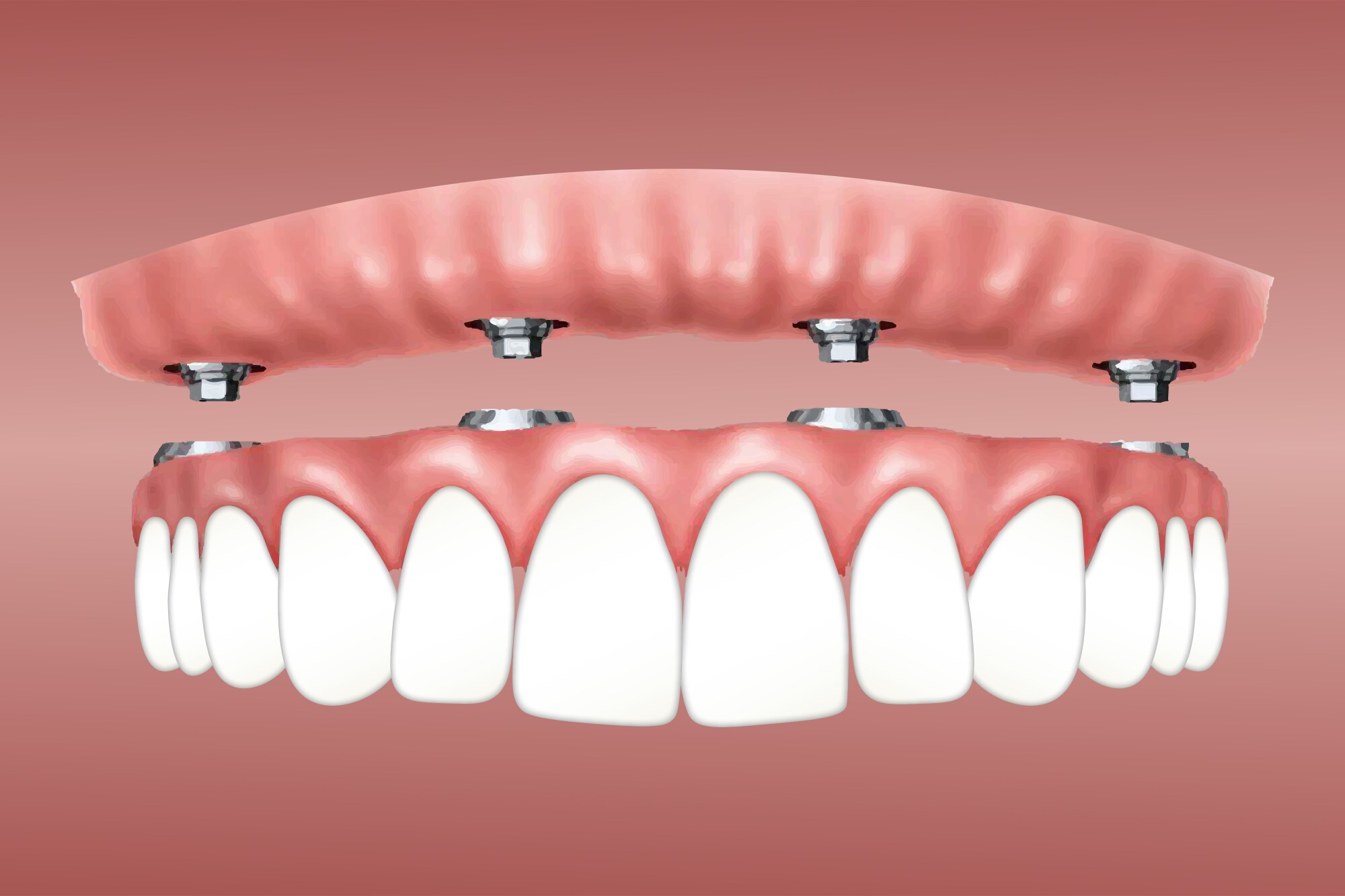An Unbiased View of Dental Sense
An Unbiased View of Dental Sense
Blog Article
Top Guidelines Of Dental Sense
Table of ContentsThe Main Principles Of Dental Sense How Dental Sense can Save You Time, Stress, and Money.Our Dental Sense StatementsNot known Factual Statements About Dental Sense
are clinical devices surgically implanted right into the jaw to recover a person's capacity to eat or their look. They supply support for synthetic (fake) teeth, such as crowns, bridges, or dentures. When a tooth is shed due to injury or disease, a person can experience problems such as fast bone loss, faulty speech, or adjustments to chewing patterns that result in discomfort.Dental implant systems include an oral implant body and dental implant joint and may additionally include a joint addiction screw. Front tooth filling. The oral implant body is surgically placed in the jawbone instead of the tooth's root. The oral implant abutment is generally connected to the dental implant body by the joint addiction screw and extends through gum tissues right into the mouth to support the connected fabricated teeth
(https://trello.com/w/dentalsense11/members)Framework of The Oral Implant System choosing dental implants, talk with your oral service provider regarding the potential advantages and dangers, and whether you are a prospect for the procedure. Points to think about: Your total wellness is an important consider establishing whether you are an excellent candidate for oral implants, how much time it will take to recover, and the length of time the implant might remain in place.
Cigarette smoking might affect the recovery process and reduce the long-term success of the dental implant. The recovery procedure for the implant body might take a number of months or longer, during which time you usually have a momentary joint instead of the tooth. the dental implant treatment: Very carefully follow the dental hygiene guidelines provided to you by your oral supplier.
Unknown Facts About Dental Sense
Implant failing can lead to the need for another surgical procedure to take care of or replace the dental implant system. Restores the ability to eat Restores cosmetic appearance Helps keep the jawbone from reducing because of bone loss Preserves the health and wellness of the bordering bone and gums Aids keep adjacent (close-by) teeth stable Boosts top quality of life Damages to surrounding natural teeth throughout implant placement Injury to the surrounding tissues during surgical procedure, such as sinus perforation Injury throughout surgical treatment (as an example, crack of surrounding jawbone) Poor function, such as seeming like the teeth do not attack together typically A feeling that the tooth hangs or twisting in location arising from a joint screw loosening Implant body failing (looseness of the implant body) due to systemic infection, which might be most likely in people with uncontrolled diabetes due to regional infection in bone and gum tissues sustaining the dental implant body because of postponed recovery, which may be extra most likely in people who smoke Problem cleaning the periodontals around the implant, resulting in inadequate oral hygiene Unattended periodontal disease Post-surgical pins and needles due to nerve impingement or damages Always alert wellness care service providers and imaging professionals that you have dental implants before any magnetic vibration imaging (MRI) or x-ray procedures.
FDA is not knowledgeable about any kind of negative occasions reported for MRI or x-ray procedures with oral implants. Oral implants systems are normally made from materials that adhere to global consensus requirements of the International Company for Standardization (ISO) or ASTM International. These criteria have details of what makes a secure product.

A dental implant is a structure that changes a missing out on tooth. With screw-like gadgets, the specialist inserts an implant into the jawbone, and it acts as a support for a synthetic tooth, called a crown.
Rumored Buzz on Dental Sense
Some individuals are not eligible for oral implant surgery. It is for dental specialists to operate on individuals with: severe illnessuncontrollable metabolic diseasebone or soft tissue illness or infectionIf these concerns are resolved, an individual can have the surgical procedure. In, oral see here now doctors avoid running on individuals with: If people with any of the above undergo dental implant surgery, there is a higher risk of the implant falling short.

Oral implant surgery is a tailored procedure. It's not the very same for every person. The complying with gives a basic summary of what you can anticipate your dental professional, oral specialist, periodontist or prosthodontist to do: Position the implant surgically. Provide you time to heal. Attach the message and last crown, bridge or denture.
Next, your surgeon will very carefully place the dental implant right into your jaw. If your dental implant is near the front of your mouth, your dental professional will certainly make a short-term tooth for you to put on till you recover.
The Main Principles Of Dental Sense
Your company can inform you what to anticipate in your situation. Throughout the healing phase, your jawbone ought to fuse to the oral implant. This process, called osseointegration, is crucial for security and long-term success. This process can take anywhere from 3 to 9 months. In many cases, it may take longer.
When your dental implant heals, your dental practitioner can connect the joint (tiny connector post) and your last reconstruction (crown, bridge or denture). This typically takes concerning one hour to finish and might require a second small surgical procedure. You shouldn't feel any pain during your dental implant treatment due to the fact that your copyright will certainly use medicine to numb your gum tissues.
Report this page